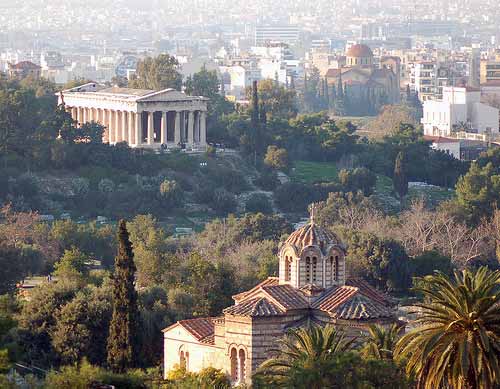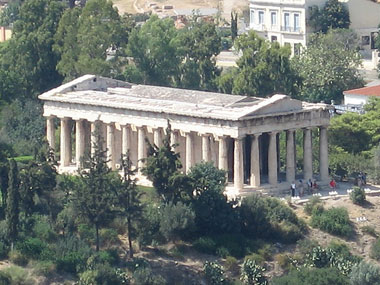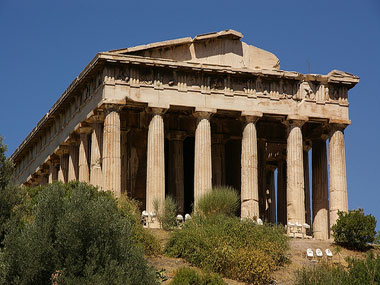The Temple of Hephaestus - Thission

To the left, looking up at the highest point of the Agora you will see the best-preserved temple of Classic Antiquity, the temple of Hephaestus. Here, the god of fire and metal Hephaestus was co-worshipped with Goddess Athena who was the guardian of the city of Athens. They were both the protectors of the arts and crafts and especially of the metallurgists and ceramists.
This temple is the first of the works proposed by Pericles. They begun building it before the Parthenon but the works were interrupted and finished after the Parthenon was ready. The architect of the temple has remained unknown but he is also responsible for the creation of three other famous temples of the time, the one of Poseidon in Sounio, the temple of Areos in Acharnes (which was moved inside the ancient agora during the 1st century BC) and the temple of Nemesis in Ramnounda.
The temple was divided in three parts. The ante temple, the main temple and a back way with 6 x 13 Doric pillars. The temple inside probably had an internal ditone colonnade, copying the Parthenon and worshipping statues of Hephaestus and Athena Ergani created by sculptor Alkamenes. The metopes, the internal frieze and the frontispieces presented the achievements of the two great heroes, Theseus and Hercules. A special emphasis was given to the achievements of Theseus and that is why there was posterior confusion for the identity of the monument.
Around 600 BC the temple is transformed in a church dedicated to Agios Georgios, Saint George, who was named Akamatis during the Ottoman Rule, meaning lazy, because it was only allowed to have a service once a year. Later the temple became a burial location for the protestants. Inside the temple, today, we can see gravestones of foreigners with latin characters that were meant to stay in Athens. Among them is the English philhellenist Tuendel that Athenians mourned for as if he was a relative. On the marbles of this temple was carved the chronicle of medieval Athens during the period of 1000-1150.







